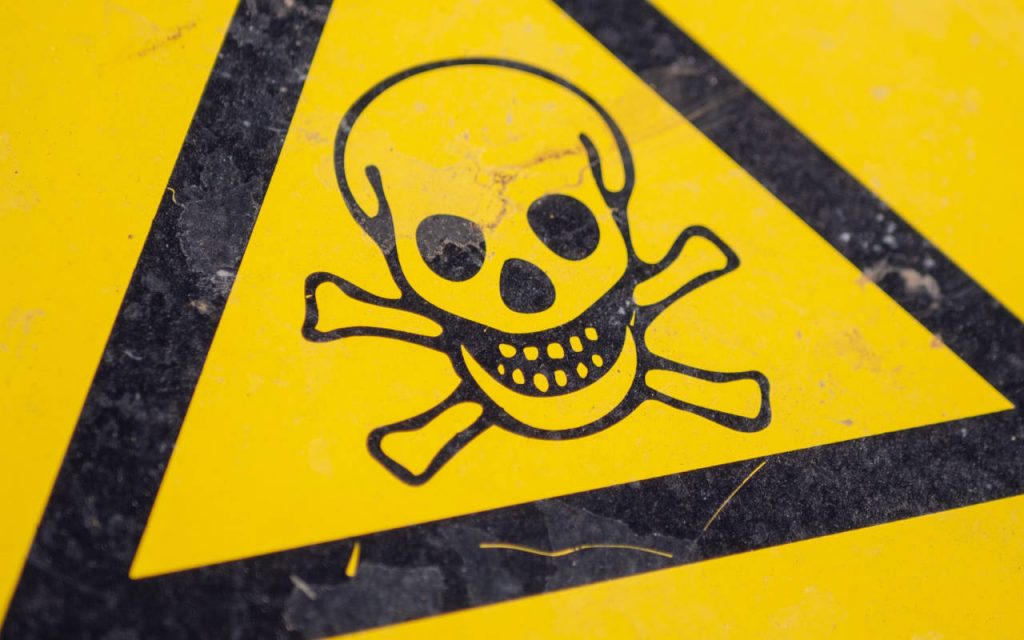Polythene – the world’s most versatile and widely used packaging material – has tons of benefits. Nothing out there matches its durability, flexibility and cost-effectiveness. But it’s not all smiles and sunshine.
Like most things in the world, polythene can be abused, misused and misunderstood to the point of danger. For one, there’s the plastic pollution problem, probably the second most visible environmental issue in the world today after climate change. But the responsible use of polythene extends way beyond this big picture thinking. Besides environmental sustainability, there’s the day-to-day safety of working with polythene to think about.
This guide covers some of the key aspects of polythene that aligns with safety regulations and compliance – including meaningful printing and labelling, recycling, chemical resistance, and increasing awareness of UV light breakdown.

Printing
Printed polythene has loads of advantages for branding and reducing additional packaging. But it can be essential sometimes, for compliance with regulatory standards. This is especially important for child safety and environmental responsibility. Printing may need to include information like recycling instructions, safety warnings, or material composition, in order to comply with local and/or international regulations.
Depending on your use case, proper labelling for safety and recycling might include:
Recycling symbols
Indicate the recyclability of the packaging with the standardised number for polythene film – in this case, 4 for LDPE.
Learn more: What do the numbers on plastic mean?
Safety warnings
Clearly mark potential hazards – like choking and asphyxiation. It seems unnecessarily obvious, but these labels exist for a reason. Using them can prevent misuse and add an additional layer of user safety.
Material information
Provide details about additives used, like flame retardant additives – or if no UVIs have been used, mark the material as unsuitable for outdoor use. Chemical compliance, which we’ll cover later, might need to be advised here, too.
Safe disposal of polythene
Polythene is highly recyclable, and this is the best way to dispose of polythene safely. But effective recycling requires proper sorting and cleaning, which is reliant on adequate labelling.
Businesses (and all packaging users) should follow local recycling guidelines to give polythene waste the best chance of being recycled. We all hear horror stories of bales of plastic being shipped off around the world to be sorted by some other country – but the alternative is invariably the ocean. Encourage both recycling and the use of recycled polythene products, to reduce environmental impact as much as possible.
UV light breakdown
Not everyone knows this, but polythene breaks down under prolonged exposure to UV light, leading to brittleness and loss of structural integrity. UV inhibitors can be added during the manufacturing process to enhance resistance to UV light and extend the material’s lifespan, but without UVIs, polythene exposed to the sun will eventually fail. This can be catastrophic in applications like construction, but even for general packaging, there can be nasty consequences if UV breakdown occurs; like microplastics leaching into food or medicines.
This leads us on to the next key safety considerations – food and chemical compatibility.
Food safety: blue polythene bags
Blue polythene bags are commonly used in food packaging due to their visibility and safety features. These bags help prevent contamination and keep packaging compliant with food safety standards.
Learn more about blue polythene bags
Polythene is highly inert and resistant to pretty much everything when it comes to foods, but it’s not immune to all chemicals.
Chemical compatibility
Polythene exhibits excellent chemical resistance, making it suitable for packaging a wide range of substances. But understanding the properties of polythene is essential for ensuring compatibility with different chemicals.
Certain acids, oils and alcohols are known to attack polythene. Other compounds containing ethylene can try to “take away” the ethylene locked up in the polymer, because there’s another substance that attracts ethylene in them. It’s good to know this as a safety precaution, so that if any incompatible chemicals are destined to come into contact with your packaging, you can account for it.
The list of known chemical compounds that can harm polythene is thankfully short, and can be found in full here.
Regulatory compliance
Packaging for sensitive and hazardous materials (like medical waste and asbestos) must comply with strict regulatory standards to ensure safety. These regulations cover aspects such as material strength, labelling and disposal methods. For example, heavy duty polythene bags for asbestos removal must be:
- Double wrapped and labelled, with a red inner bag printed with asbestos warnings, and a clear outer bag with the carriage of dangerous goods (CDG) hazard sign printed onto it.
- Made only of heavy duty or super heavy duty polythene, as this offers the best protection against tearing.
- Fully sealable. Partial seals are not acceptable.
Only packaging with this specification will be UN approved and certified, and this will also meet UK legislation for asbestos disposal.
Key things to remember
- Make sure your packaging meets the necessary strength and durability for your product. If you’re not sure what you need, talk to our packaging experts.
- Use clear and accurate labelling if required, to identify hazardous contents, choking hazards, and chemical compliance
- Follow proper disposal procedures, and recycle wherever possible
Custom polythene packaging
NPF Packaging creates custom polythene packaging. Get a quote now, or call us on 01773 820415 to start your order.


